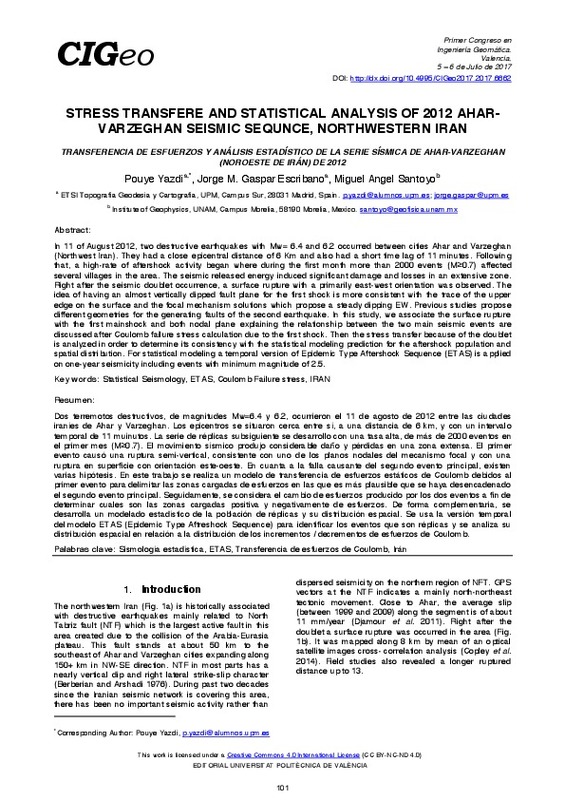JavaScript is disabled for your browser. Some features of this site may not work without it.
Buscar en RiuNet
Listar
Mi cuenta
Estadísticas
Ayuda RiuNet
Admin. UPV
Stress transfere and statistical analysis of 2012 Ahar-Varzeghan siesmic sequence, Northwestern Iran
Mostrar el registro completo del ítem
Yazdi, P.; Gaspar Escribano, J.; Santoyo, MA. (2017). Stress transfere and statistical analysis of 2012 Ahar-Varzeghan siesmic sequence, Northwestern Iran. En Primer Congreso en Ingeniería Geomática. Libro de actas. Editorial Universitat Politècnica de València. 101-106. https://doi.org/10.4995/CIGeo2017.2017.6662
Por favor, use este identificador para citar o enlazar este ítem: http://hdl.handle.net/10251/100651
Ficheros en el ítem
Metadatos del ítem
| Título: | Stress transfere and statistical analysis of 2012 Ahar-Varzeghan siesmic sequence, Northwestern Iran | |
| Otro titulo: |
|
|
| Autor: | Yazdi, Pouye Gaspar Escribano, Jorge Santoyo, Miguel Angel | |
| Fecha difusión: |
|
|
| Resumen: |
[EN] In 11 of August 2012, two destructive earthquakes with Mw= 6.4 and 6.2 occurred between cities Ahar and Varzeghan
(Northwest Iran). They had a close epicentral distance of 6 Km and also had a short time lag of 11 ...[+]
[ES] Dos terremotos destructivos, de magnitudes Mw=6.4 y 6.2, ocurrieron el 11 de agosto de 2012 entre las ciudades
iraníes de Ahar y Varzeghan. Los epicentros se situaron cerca entre sí, a una distancia de 6 km, y con ...[+]
|
|
| Palabras clave: |
|
|
| Derechos de uso: | Reconocimiento - No comercial - Sin obra derivada (by-nc-nd) | |
| ISBN: |
|
|
| Fuente: |
|
|
| DOI: |
|
|
| Editorial: |
|
|
| Versión del editor: | http://ocs.editorial.upv.es/index.php/CIGeo/CIGeo2017/paper/view/6662 | |
| Título del congreso: |
|
|
| Lugar del congreso: |
|
|
| Fecha congreso: |
|
|
| Tipo: |
|








